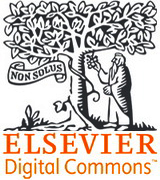Double Blind Evaluation Policy
A double-blind review process is a method used to evaluate submissions, most commonly for academic journals, where both the authors' identities and the reviewers' identities are concealed from each other throughout the review process. This is to minimize bias and ensure that submissions are judged solely on their merit, content, and quality rather than factors like the author's reputation, affiliation, or personal relationships.
Here's how a double-blind review is typically carried out:
- Submission: Authors submit their work (manuscript, paper, abstracts, etc.) through the journal's submission system. Crucially, the submission must be prepared in a way that does not reveal the authors' identities. This usually involves:
- Removing identifying information: The authors' names, affiliations, and contact details are removed from the manuscript itself. Any acknowledgements, funding sources that might reveal identities, or other self-referential information are also removed.
- Blind title page: A separate title page is often submitted with the authors' information, but this is kept separate from the manuscript that goes to reviewers.
- File metadata: Authors should also check and remove any identifying information that might be embedded in the file metadata (e.g., author name in the document properties).
- Assignment to Reviewers: The editor or managing editor receives the submissions and assigns them to reviewers who are experts in the relevant field. The editor ensures that reviewers do not have any known conflicts of interest with the authors (e.g., co-authorship, personal relationships, etc.).
- Review Process: The reviewers receive the anonymized manuscript. They read and evaluate the work based on pre-defined criteria, such as:
- Significance: Is the research important and original?
- Quality: Are the methods sound, the data robust, and the analysis rigorous?
- Clarity: Is the writing clear, concise, and well-organized?
- Relevance: Does the work fit the scope of the journal?
Reviewers provide constructive feedback and recommendations to the editor. They are unaware of who the authors are.
- Editor's Decision: The editor receives the reviews and makes a decision based on the reviewers' recommendations. Possible decisions include:
- Accept: The submission is accepted for publication or presentation.
- Minor Revisions: The authors are asked to make minor revisions based on the reviewers' feedback.
- Major Revisions: The authors are asked to make major revisions and resubmit the work for further review.
- Reject: The submission is rejected.
- Communication with Authors: The editor communicates the decision to the authors, providing the reviewers' comments (often anonymized) to help the authors improve their work, even if it was rejected. The authors, at this stage, are typically still unaware of who the reviewers were.
- Revision and Resubmission (if applicable): If revisions are requested, the authors revise their work and resubmit it. This revised version is often sent back to the original reviewers for a second round of review.
Benefits of Double-Blind Review:
- Reduced Bias: Minimizes bias based on author reputation, gender, nationality, or institutional affiliation.
- Fairer Evaluation: Focuses the reviewers' attention on the quality and merit of the work itself.
- Encourages Objectivity: Promotes more objective and unbiased evaluations.











